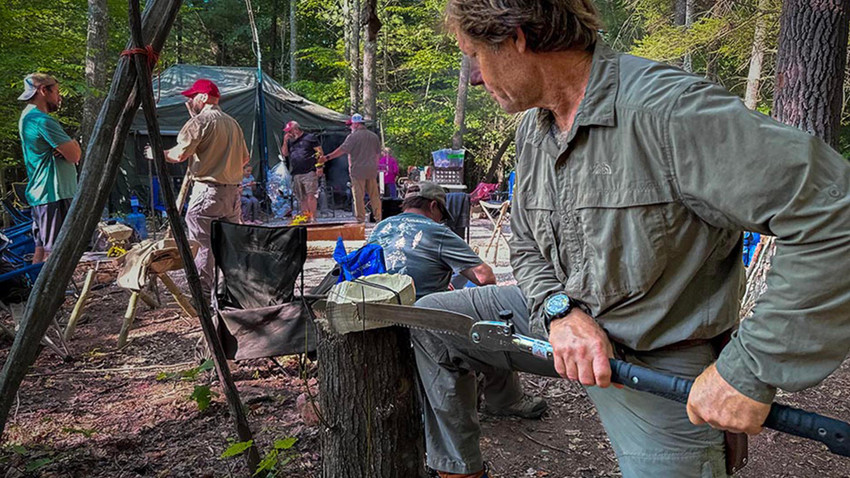For Craig Caudill, Author and Founder of the Nature Reliance School, Silky saws are indispensable
Craig Caudill didn’t intend to become one of the leading survival, bushcraft and wilderness instructors in the Southeast. He became an expert by doing what he loved in his home state of Kentucky: hiking, fishing, backpacking, and exploring nature.
“The Nature Reliance School, which I started in 2006, was the result of sharing skills with friends. Then I got picked up by a gear company to do videos for YouTube. That was my introduction into the business of survival skills training.”
Now Caudill teaches wilderness survival, bushcraft, survival tracking, not only to everyday civilians, but also to the U.S. military, law enforcement, and others. He’s a certified master naturalist, and he specializes in meeting people where they are in the outdoor experience, from first timers to specialists looking to broaden their skills.
“Anyone who goes out into the woods should have an understanding of the ecology, the soils, trees, plants, mammals, and insects,” said Caudill. “The more we know about what’s in our location, the more we can enjoy our time out in nature.”
Caudill says that one of the primary skills he teaches is plant and tree identification. “From a hunter’s and bush crafter’s perspective, Alabama is the only state with more tree diversity outside of Kentucky. If you’re going to cut trees and make a bushcraft hammer, you want a more dense wood like oak. If you’re building a temporary shelter, a softwood will be strong enough and quick to cut. The typical person goes out and just sees trees. We help people who are in that position where they don’t know the difference between a pine and an oak. We meet people where they are.”
Caudill has advanced black belt degrees in aikido, judo, and iaido—Japanese swordsmandship. “I have a liking for Japanese tools,” said Caudill. “I understand how much energy is put into making things both strong and beautiful.”
He first encountered Silky saws when a student brought one to a class. And that’s all he’s used ever since. It has become his primary cutting tool, and he has six different saws at this point.
“We train people in survival, not recreational ‘granola’ survival, but hard, serious, problematic how-to-stay-alive survival. That makes us very focused on tools. We use tools that work under stress. We don’t intentionally abuse tools.…my tools are precious to me, and I care for them and use them how they’re supposed to be used. And Silky saws are at the heart of my quiver.”
Caudill approaches survival skills through the four puzzle pieces of mindset, skills, teamwork, and gear. He wrote a wilderness survival book based on 200 stories he collected of how people died in the outdoors. He says that when all else fails, gear can be what saves the day.
“When you’re trying to survive, one of the most important things you can do is to build a shelter using the least energy possible. When it comes to cutting the wood for a shelter, a Silky is the tool for the job.”
Caudill’s most recent book and video series is called Traditional Bushcraft. In it, Silkys make appearances building teepee-pole cooking setups, making a bushcraft hammer, carving a bowl, and honing an axe handle from an oak log.
If you’re in Kentucky or willing to travel there, you can train with Caudill. He also has online training on everything from tracking and bushcraft to leadership and development.
Caudill’s top maintenance tip for his Silkys: wipe the blade clean after use and tighten the screw and nut.

